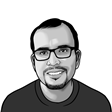This article was originally published in The Microbiologist in 2022.
According to a recent report by the Food and Agriculture Organization of the United Nations (FAO), the contribution of aquaculture to global fish production reached 82.1 million tonnes in 2018, growing at 7.5% per year since 1970. However, the emergence and re-emergence of infectious diseases have become a limiting factor for further growth and sustainability.
Because the use of antibiotics needs to be limited due to the increasing prevalence of antibiotic-resistant bacteria, the search for alternative environmentally friendly approaches is urgently needed. Among them, the use of probiotics has gained considerable attention, mainly due to the promising results under experimental conditions.
This raises the following question: is there evidence of its effectiveness under field conditions?
In an effort to address this, a study published in Journal of Applied Microbiology in July 2020 demonstrated the potential to enhance growth, prevent ulcers, and decrease mortality in Atlantic salmon (Salmo salar) after adding probiotic strains of Aliivibrio spp. in the rearing water.
Broadly speaking, the term ‘probiotics’ refers to live microorganisms that, when administered in adequate amounts, confer several beneficial effects to the host. Based on their mechanisms of action, probiotics can create a hostile environment for pathogens by the production of antimicrobial compounds, competition for available space and nutrients, inhibition of virulence gene expression, disruption of quorum sensing, and modulation of host immune responses. In the study by Klakegg et al. discussed here, three trials were conducted at two aquaculture production sites in Norway, in which a probiotic based on naturally occurring marine bacterial species was added to the rearing water of Atlantic salmon. These trials were conducted to find alternative or complementary solutions that could reduce the growing prevalence of ulcers in vaccinated fish, probably caused by pathogenic bacteria, such as Moritella viscosa and Aliivibrio wodanis. Fish were followed for a period of four to six months after a single ‘probiotic bath’, and performance indicators such as growth, ulcers, and survival were recorded.
At the end of the studies, a single bath introduction of probiotic strains resulted in an increased growth rate of salmon in the post-smolt phase, which corresponds to the first three to four months after sea transfer. Moreover, Trial one demonstrated that both mortality and prevalence of ulcers were significantly lower in the probiotic group compared with the control. Feed conversion rates, recorded in Trial one and Trial two, were 9–28% better for the probiotic groups compared with the control groups. Interestingly, Aliivibrio spp. strains used as probiotics in these trials were phylogenetically close to A. wodanis, which is one of the causative agents of winter ulcer disease in Atlantic salmon. Previous studies have shown that the presence of A. wodanis has an inhibiting effect on M. viscosa, suggesting that similar mechanisms may be involved in the interaction between these Aliivibrio spp. strains and M. viscosa.
Although the inhibitory mechanism(s) of Aliivibrio spp. strains was not characterised in the study, the antimicrobial effects of most probiotics can be related to the production of antibiotics, bacteriocins, fatty acids, hydrogen peroxide, lytic enzymes or organic acids. Previous studies have also suggested that probiotics can enhance the host immune responses; however, plasma concentrations of antibodies against M. viscosa from survivors in the study were inversely proportional to the concentration of bacteria in the probiotic group, suggesting that the protection was not due to an increased activity in the humoral immune defence. As the conclusion, the authors suggest that the probiotic bacteria act by inhibiting other bacteria, as demonstrated by the reduced level of infection, and the reduced level of antibodies against M. viscosa.
Although further studies are needed to understand the mechanisms by which probiotics exert their beneficial effects, the use of probiotics undoubtedly represents a therapeutic alternative to antibiotics. Moreover, the rapid development of a wide range of cutting-edge sequencing technologies, such as metagenomics and metatranscriptomics, may help to reach these goals. Such knowledge will also permit the use of products or metabolic by-products (postbiotics) secreted by probiotic bacteria or released after bacterial lysis, as well as the optimisation of synergistic combinations (synbiotics) as suitable strategies for disease prevention and control in aquaculture.












No comments yet